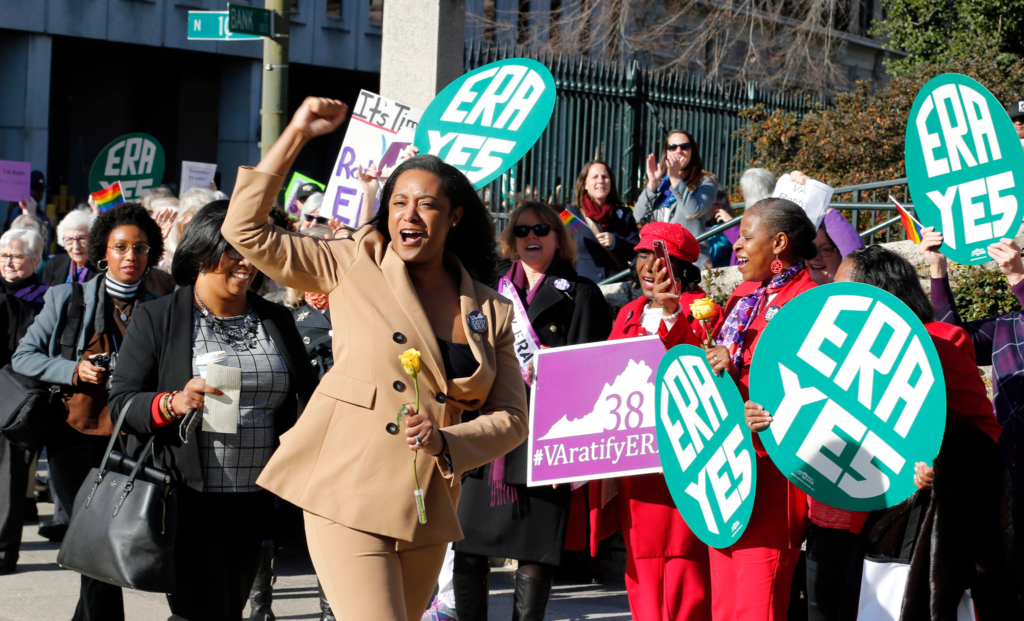
1. Guarantees Explicit Gender Equality
•The U.S. Constitution does not currently guarantee equality on the basis of sex. While some legal protections exist, they rely on interpretations of the Equal Protection Clause in the 14th Amendment.The ERA would explicitly prohibit discrimination based on sex, providing a clear, unambiguous guarantee of equality for all genders.

2. Fills Gaps in Existing Laws
•Current laws like the Equal Pay Act and Title IX address gender discrimination in specific areas but can be repealed or weakened by future legislation.The ERA would establish permanent, unchallengeable protections at the constitutional level, ensuring gender equality in areas such as education, employment, healthcare, and more.
3. Strengthens the Fight Against the Gender Wage Gap
•Women, particularly women of color, continue to earn less than men for equal work.The ERA would provide a constitutional basis for challenging discriminatory wage practices, fostering economic fairness and justice.
4. Supports Intersectional Equality
•The ERA’s protections extend beyond women to include non-binary individuals and men facing discrimination based on sex or gender identity.By addressing systemic biases, the ERA creates a foundation for tackling intersectional issues, benefiting diverse communities.5. Advances Global Standards for Human RightsOver 100 countries have explicit constitutional guarantees of gender equality.The ERA would align the U.S. with international human rights norms, strengthening its global leadership in equality and democracy.
—
Common Misconceptions
1. “The ERA is unnecessary because laws already protect women.”Existing laws can be overturned or weakened; constitutional amendments are permanent.Many legal protections, like pregnancy discrimination laws, still face challenges in enforcement.
2. “The ERA will erase gender-specific policies like maternity leave.”The ERA ensures that benefits unique to women (e.g., maternity leave) are preserved, while also addressing broader inequalities.
3. “The ERA undermines men’s rights.”The ERA guarantees equality for all genders, including men, in areas like parental rights and workplace discrimination.
—
Historical Context

Introduced in 1923 by suffragist Alice Paul, the ERA has faced nearly a century of debate.It was passed by Congress in 1972 but fell short of ratification by the required 38 states by the 1982 deadline.
In recent years, additional states have ratified it, sparking renewed discussions about its inclusion in the Constitution.






